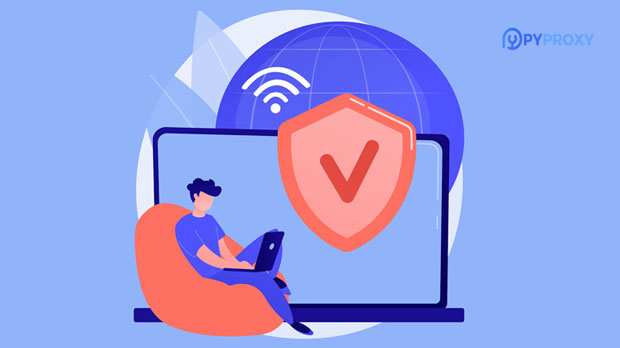How does the IP address diversity of Luminati compare to pyproxy in static residential proxies?
In the realm of static residential proxies, two popular services often compared are Luminati and PYPROXY. One of the key factors that clients consider when selecting a proxy service is the diversity of IP addresses available. This diversity can significantly impact the efficiency, anonymity, and security of online operations. In this article, we will delve into a comprehensive comparison of the IP address diversity offered by Luminati and Pyproxy in the context of static residential proxies, examining how each service handles IP rotation, global reach, and the effectiveness of their respective networks. Understanding Static Residential ProxiesBefore diving into the comparison, it’s essential to understand what static residential proxies are and why their IP address diversity matters. Static residential proxies are a type of proxy server that uses real residential IP addresses instead of data center IPs. This makes them less detectable by websites and more likely to bypass geo-restrictions, IP bans, and CAPTCHAs. The diversity of IP addresses refers to how varied and numerous the IPs are within the proxy network, which plays a crucial role in ensuring smooth, uninterrupted browsing or data gathering.Overview of Luminati's IP Address DiversityLuminati, now known as Bright Data, has long been a leader in the proxy network industry, providing a vast pool of residential IP addresses across multiple regions worldwide. Luminati boasts a large global reach with millions of residential IPs, sourced from real devices, ensuring high reliability and an extensive range of IPs. This vast network provides an impressive level of IP diversity, offering proxies in over 200 countries, including rural and hard-to-reach locations, which is a crucial advantage for businesses looking to scale their operations globally. The IP rotation mechanism in Luminati is highly customizable, allowing users to set up automatic IP changes after a specific duration or number of requests, which enhances security and reduces the risk of IP blacklisting. Additionally, with its dynamic IP allocation system, Luminati ensures that clients can access a wide range of IP addresses, thus reducing the chances of encountering server blocks or captchas.Overview of Pyproxy's IP Address DiversityPyproxy, although newer compared to Luminati, has been gaining traction in the static residential proxy market for its competitive pricing and high-quality service. Pyproxy offers residential IP addresses sourced from a large network of real users worldwide, but its scale is smaller when compared to Luminati. Nevertheless, Pyproxy ensures substantial IP diversity across key regions, including the US, Europe, and Asia.What sets Pyproxy apart is its focus on niche market segments, offering specialized IP pools for specific countries or cities. For example, businesses looking to target particular geographic regions can benefit from Pyproxy’s tailored IP addresses, which help in maintaining anonymity and avoiding detection by websites. However, Pyproxy’s network size is still not as expansive as Luminati's, which means the diversity may be somewhat limited when compared to the more extensive network of Luminati.Key Factors Impacting IP Address DiversityWhen comparing the IP address diversity of Luminati and Pyproxy, there are several factors to consider that directly influence their performance and suitability for different use cases.1. Global Reach and Coverage: Luminati offers a more extensive global coverage compared to Pyproxy. Its vast pool of residential IPs across over 200 countries makes it an ideal choice for businesses that require a truly global presence. Pyproxy, on the other hand, offers more regionalized IP pools, which may be beneficial for clients targeting specific countries or cities.2. IP Pool Size: Luminati’s network is one of the largest in the industry, with millions of residential IPs, providing an unparalleled level of IP diversity. Pyproxy, while competitive, does not yet match Luminati in terms of sheer numbers, which could limit clients who need a massive number of rotating IP addresses for large-scale operations.3. Anonymity and Rotation: Both Luminati and Pyproxy offer strong anonymity features, ensuring that users can remain undetected by websites. However, Luminati provides more advanced customization options for IP rotation, allowing users to choose the frequency of IP changes, the time intervals, and the types of IPs they want to use (e.g., sticky or rotating IPs). Pyproxy’s IP rotation is simpler but still effective for most use cases.4. Targeted IP Pools: Pyproxy’s targeted approach for niche markets can be a major selling point for businesses that require IPs from specific geographic locations. It offers a more tailored experience, ensuring that users get the most relevant IPs for their needs. Luminati, while offering broad coverage, also provides localized IPs but may not always match Pyproxy’s precision in this area.5. Reliability and Speed: Luminati’s vast network of residential IPs ensures high availability and reliability. Users benefit from a wide array of IPs with minimal downtime. Pyproxy, while reliable, may not have the same level of redundancy and availability in comparison. The larger network of Luminati makes it less susceptible to issues like IP exhaustion and server congestion.Cost Considerations and Value for MoneyWhile the IP address diversity in both Luminati and Pyproxy is important, it’s also crucial to consider the cost. Luminati’s service is often seen as a premium offering, with pricing that reflects its extensive network and advanced features. For businesses with large budgets and a need for vast IP address diversity, Luminati may be a suitable option, offering excellent value in terms of global reach and reliability.Pyproxy, in contrast, provides a more cost-effective solution, especially for smaller businesses or those targeting specific regions. Although its network may not be as large as Luminati’s, Pyproxy offers an affordable and efficient service with sufficient IP address diversity for most common use cases.Conclusion: Which Proxy Network Offers Better IP Address Diversity?In conclusion, both Luminati and Pyproxy provide impressive IP address diversity, but they cater to different client needs. Luminati stands out for its massive global reach, large pool of IPs, and advanced customization options, making it the top choice for large-scale businesses that require a broad and diverse set of residential proxies. Pyproxy, while smaller in scale, excels in providing targeted IP pools and competitive pricing, making it a great option for businesses with specific geographic needs or budget constraints.Ultimately, the decision between Luminati and Pyproxy will depend on the size and scope of the business, as well as the specific requirements for IP address diversity and proxy usage. Both services offer valuable features, but for those requiring the utmost diversity and global reach, Luminati takes the lead.
2025-03-03

























































